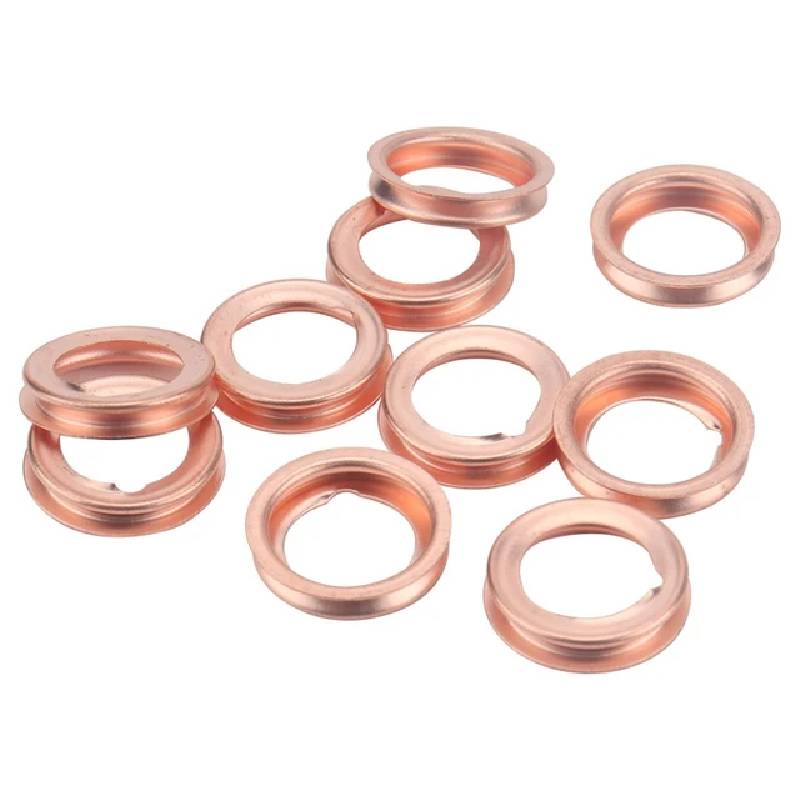Understanding O-Ring Oil Seals for Improved Performance and Durability in Machinery
Understanding O-Ring Oil Seals A Comprehensive Overview
O-ring oil seals are crucial components in various mechanical applications, serving as a barrier to prevent the leakage of fluids and contaminants. They are widely used in numerous industries, including automotive, aerospace, and manufacturing, owing to their versatility and effectiveness in ensuring a secure seal between moving parts. This article delves into the construction, types, applications, and maintenance of O-ring oil seals.
What is an O-Ring Oil Seal?
An O-ring oil seal is a circular elastomeric sealing device that fits into a groove and is compressed between two surfaces to create a seal. The design of the O-ring resembles the letter 'O', hence its name. The primary function of an O-ring oil seal is to retain lubricants while preventing the ingress of dirt and moisture, which can lead to wear and tear of mechanical components.
Construction of O-Ring Oil Seals
O-rings are typically made from various elastomers, including nitrile rubber (NBR), fluorocarbon (FKM), and silicone, among others. The material chosen will depend on the specific application, as each type has unique properties regarding temperature resistance, chemical compatibility, and durability. O-ring oil seals are available in different sizes and profiles, allowing for customization to fit specific machinery requirements.
Types of O-Ring Oil Seals
O-rings can be categorized based on the applications they are designed for
1. Static O-Rings These seals are used in applications where there is no movement between the two surfaces. They provide a reliable barrier against fluid leakage in stationary components.
2. Dynamic O-Rings These are designed for applications where there is relative motion between the sealing surfaces, such as in hydraulic cylinders or rotary shafts. Dynamic O-rings must be formulated to withstand wear from friction and movement.
3. Back-up Rings Often used in conjunction with O-rings, back-up rings help prevent the extrusion of the O-ring in high-pressure applications. They are typically made of harder materials than O-rings to enhance their resistance to deformation.
o ring oil seal

Applications of O-Ring Oil Seals
The versatility of O-ring oil seals allows them to be found in many applications, including
- Automotive O-rings are used in engines, transmissions, and hydraulic systems to maintain lubrication and prevent fluid leaks that could damage components or lead to failures.
- Aerospace In aircraft and spacecraft, O-rings are essential for maintaining fuel and hydraulic fluid integrity, ensuring safe operation under varying pressures and temperatures.
- Industrial Machinery O-rings are used in pumps, compressors, and conveyors to seal fluids, maintain pressure, and reduce the risk of contamination.
Maintenance and Replacement
Proper maintenance of O-ring oil seals is vital for the longevity and efficiency of mechanical systems. Regular inspections should be conducted to check for signs of wear, cracking, or swelling caused by exposure to harsh chemicals or extreme temperatures. If an O-ring shows signs of damage, it should be replaced promptly to avoid leaks that could lead to bigger problems.
When replacing O-rings, it’s essential to select the right size and material for the application. Applying lubrication during installation can also help in ensuring a proper seal and extending the life of the O-ring.
Conclusion
O-ring oil seals play a significant role in the functionality and reliability of mechanical systems across various industries. Understanding their construction, types, applications, and maintenance can help in selecting the right O-ring for specific needs, thereby enhancing the performance and lifecycle of machinery. Regular attention to these components is crucial for preventing failures and ensuring optimal operation, underscoring their importance in engineering and manufacturing processes.
-
Simplifying Oil Changes: A Comprehensive Guide to Oil Drain Plugs and Their Variants
News Aug.04,2025
-
Mastering Oil Drain Maintenance: Solutions for Stripped, Worn, and Upgraded Oil Plugs
News Aug.04,2025
-
Fixing Oil Pan Plug Issues: Leaks, Stripped Nuts, and the Right Replacement Solutions
News Aug.04,2025
-
Everything You Need to Know About Oil Drain Plugs: Sizes, Fixes, and Upgrades
News Aug.04,2025
-
Choosing the Right Oil Drain Plug: A Guide to Sizes, Materials, and Drain Innovations
News Aug.04,2025
-
A Complete Guide to Automotive Drain Plugs: Types, Problems, and Innovative Solutions
News Aug.04,2025
-
The Ultimate Guide to Car Repair Kits: Tools and Essentials Every Driver Should Own
News Aug.01,2025
Products categories















